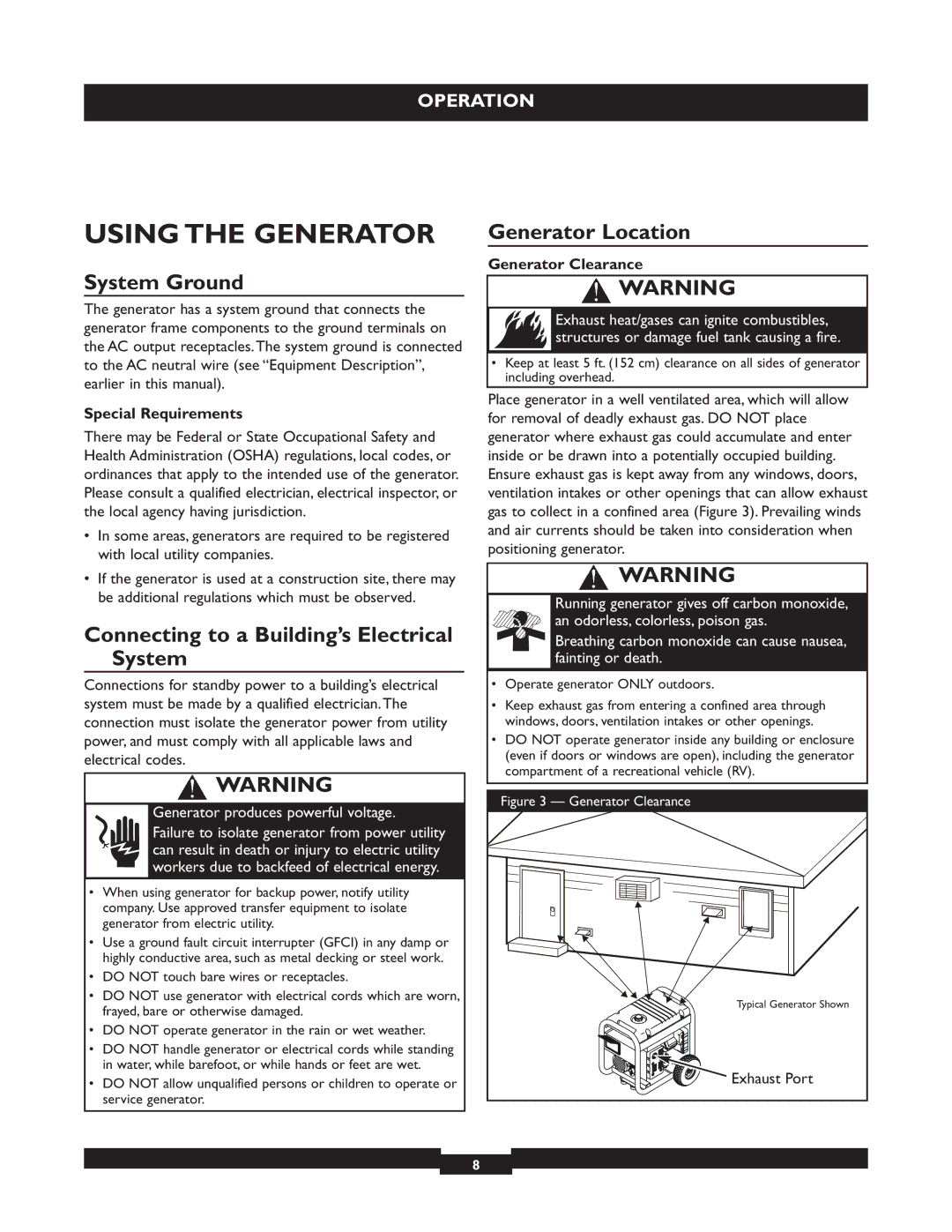30219 specifications
The Briggs & Stratton 30219 is a highly regarded gasoline-powered generator that epitomizes reliability and performance for both residential and small commercial applications. This model is particularly popular among homeowners who require a dependable source of backup power during outages or those who want to power outdoor events and tools.One of the standout features of the Briggs & Stratton 30219 is its impressive power output. With a 3,200 running watts and a peak output of 3,750 watts, it is capable of powering essential home appliances, such as refrigerators, heating systems, and quickly rechargeable devices. This capability makes it an excellent choice for emergency power solutions, ensuring that users can maintain comfort and functionality during unexpected power interruptions.
At the heart of the 30219 generator is a robust engine designed for longevity and efficiency. The 162cc OHV (Overhead Valve) engine provides a strong performance while maintaining fuel efficiency, allowing users to maximize their runtime. This generator is engineered with a 1.5-gallon fuel tank, providing up to 8 hours of continuous operation at 50% load, which is essential when you need consistent power without frequent refueling.
In terms of portability, the Briggs & Stratton 30219 incorporates a compact and lightweight design. It is equipped with a sturdy handle and wheels, making it easy to transport from one location to another. This is particularly beneficial for users who may need to move the generator for outdoor activities, construction sites, or emergency situations.
Safety is also a vital concern for users during operation. The Briggs & Stratton 30219 is equipped with a built-in low-oil shutdown feature, which automatically turns off the engine when oil levels become too low. This helps to prevent engine damage and extends the life of the generator. Additionally, it includes multiple outlets, providing versatility for connecting various devices while ensuring that users can power multiple items simultaneously.
Overall, the Briggs & Stratton 30219 generator is a powerful, efficient, and portable solution suitable for a variety of power needs. With its durable construction, reliable performance, and user-friendly features, it continues to earn a reputation as one of the best choices on the market for those seeking dependable backup power. Whether experiencing an outage or powering outdoor activities, the 30219 generator stands ready to perform.

